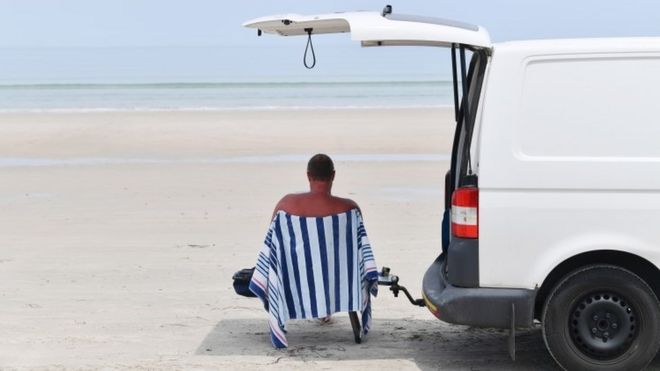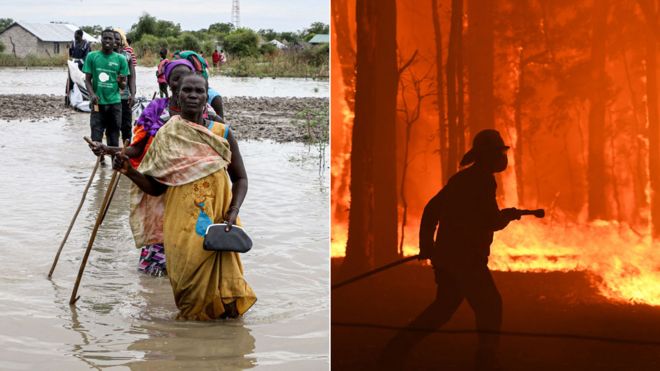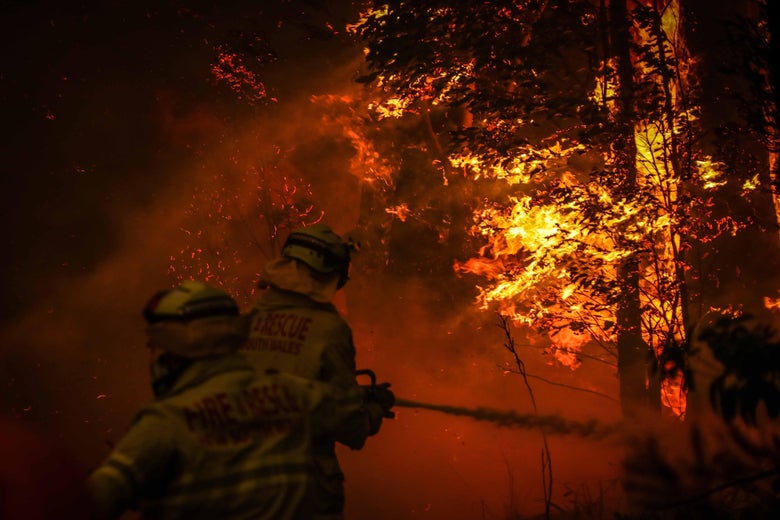The ABC were at it again last week, fawning over 23 former fire and emergency leaders who commented, outside their area of expertise, about an alleged relationship between bushfires and climate change.
It is worth asking how the non-expert views of such people are even newsworthy.
But the propaganda in relation to climate change, from the classroom to the university to politicians and to most of the media, has to give cause for concern.
As The Australian newspaper editorialised at the weekend, “It is time for a dose of icy water. Climate change did not cause the fires.
Drought and even deadlier blazes have been part of Australian life for more than a century … even if Australians eliminated all of the nation’s greenhouse gases, about 1.3 per cent of the global total, and pandered to extremists who want meat consumption, grazing and flying reduced markedly, nothing, virtually nothing, would be achieved …”
Well, let’s deal first with the “deadlier” blazes. Firefighters are constrained in executing their duties by Greenies and green policie. Dramatic language has been used to suggest that the devastation of last week is “unprecedented”, “apocalyptic”, “catastrophic”, and the result of the “worst bushfire conditions ever”.
So what is to be made of the Black Saturday fire in Victoria in 2009 which burned 450,000 hectares of land, killed 173 people and destroyed more than 2000 homes? Or the Ash Wednesday fire in Victoria and South Australia in 1983, which burned 520,000 hectares, destroyed 2400 homes and killed 75 people? Or the Tasmanian Black Tuesday fires in 1967, which burned more than 260,000 hectares, destroyed something like 1400 homes and killed 62 people? Or, back in 1939, the Black Friday fire, which burned almost two million hectares, destroyed more than 700 homes and resulted in 71 fatalities?
Adding Fuel to the Fire
No one is denying the gravity of what people and firefighters have been through now, but it is no use gilding the lily here. You can’t have a fire without fuel. Two factors above all else come into play here. In NSW, when Bob Carr was the minister, and later premier, he ratified moves to have fire trails abandoned. Carr’s moves prevented access to those fire trails by the Rural Fire Service, under the pretext he was keeping four 4WDs and campers out. The government (and how many problems that we face today are created by government?) put locked gates on these national parks and planted big rocks at the entry to the fire trails. Understandably, the fire trails are now overgrown with regrowth forest, impenetrable to everybody except native and feral animals.
The fire trails are now overgrown with regrowth forest, impenetrable to everybody except native and feral animal. Yet it was these fire trails that enabled the fire fighters to get to the heart of a fire. They could then create back burning and land clearing. Fire fighters could mobilise earth-moving equipment and successfully put the fire out. In those days, water bombing wasn’t in vogue. It wasn’t necessary and, anyway, it was too expensive. The fire trails were “fit for purpose”.
Today, the fire fighters know they are hopelessly limited by where they can gain access to the fires. They have to rely on very expensive water bombing strategies. The greenies, of course, endorse this strategy. Except that they, disturbingly, prefer the use of freshwater, which we don’t have, over salt water in putting out bushfires. And that is allegedly to “protect” the environment.
As one of my listeners said: “This sounds like fiction but it is not. What is all this ‘protect the environment’ hypocrisy? When have we seen any Greens MP, Zali Steggall, Adam Bandt, Sarah Hanson-Young and their leader, Richard Di Natale, line up alongside Tony Abbott to fight the fires?”
Then-senator John Williams said in 2013, “The problem in our national parks is that we have these savage fires with huge amounts of fuel per hectare; we are killing the trees, we’re killing the animals, we’re killing the koalas and anything else that lives in these areas and we call it conservation …” You and I would call it destruction. I repeat, you cannot have a fire without fuel.
Re-Learn to Burn
When you think there are seven million hectares of national parks in NSW alone, 200 of them in Sydney, and yet hazard reduction burns have occurred on less than 1 per cent of fire-prone land, then we are staring at a potential inferno. This has nothing to do with climate change. Dr Paul Read, co-director of Australia’s National Centre for Research in Bushfire and Arson, puts the number of bushfires in Australia per year at, on average, “62,000 and increasing”. Of those, 13 per cent are started deliberately and 37 per cent are suspicious. That means 31,000 Australian bushfires are either the product of arson or suspected arson, every year. That means that up to 85 bushfires begin every day because someone leaves their home and decides to start one.
The guts of the problem is again government. Local governments are being blamed for all of this, but they have no power to even lift a fallen tree or remove a broken branch. If they want to back-burn or reduce the fuel on the forest floor, they must get permission from state government and jump through endless hoops. That is, if local government want to reduce the fire hazard.
Indigenous Australians knew how to deal with fire. We have learnt nothing from them. The problem is simple. There is too much fuel on the floor and we cannot get at it. Arguing that we need more water bombers, and we will have to buy them from overseas, is attacking the symptom, not the disease.
Bureaucratic Undergrowth
The current strategies have us facing potentially appalling consequences and have nothing to do with protecting the environment. We need an independent body, removed from all government, with a simple brief to secure hazard reduction. I saw a pathetic defence of government policy last week when Environment Minister Matt Kean said the government had exceeded its own “five-year rolling target for hazard reduction”. And “that target says that over five years, on average, we will do hazard reduction of 135,000 hectares”.
National parks in New South Wales cover more than seven million hectares so at the rate of 135,000 hectares a year, you are looking at more than 51 years to complete the hazard reduction in all of them. That is somewhere south of useless.
With all the odds against them, massive build-up of fuel on the floor, dry weather, frightening winds, arsonists and governments pandering to the Greens, our fire services and volunteers are veritable heroes and should be recognised as such.
And so are the employers who fund the volunteers while they do their work. In the midst of all of this, it is easy to forget the good stories. One concerns Paul Sefsky, near Urunga on the mid-north coast. He expected to lose his home. He fled when the evacuation order came through. Firefighters managed to save his home. When he returned home, he found a handwritten note from the firefighters who had saved it. It said: “It was a pleasure to save your house. Sorry that we could not save your sheds. PS. We owe you some milk.”
This is moving and inspirational. We owe such firefighters better management of the risk than is currently the case.









